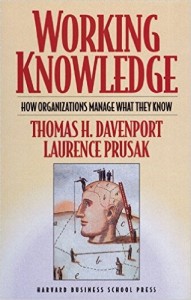 Legend has it that St. Brigid challenged St. Patrick to defy convention just one day every four years. What was her suggested break with tradition? She asked that on leap day women be permitted, for a change, to make marriage proposals to men. This opportunity for a woman to take control of her future was a rare one because the overwhelming norm of the day made it the man’s prerogative to choose if and when to propose, while the woman simply waited.
Legend has it that St. Brigid challenged St. Patrick to defy convention just one day every four years. What was her suggested break with tradition? She asked that on leap day women be permitted, for a change, to make marriage proposals to men. This opportunity for a woman to take control of her future was a rare one because the overwhelming norm of the day made it the man’s prerogative to choose if and when to propose, while the woman simply waited.
So what does this have to do with us? Your firm’s HR department will be glad to know that I’m not suggesting that we actively encourage an outbreak of marriage proposals at work. Nonetheless, I do think we can learn from Brigid’s audacity and Patrick’s flexibility. The audacity is found in Brigid’s willingness to speak up, to confront authority, to work to rebalance a system that tilts heavily in favor of one group at the expense of another. She also cleverly sought the support of an influential person (Patrick) to accomplish her goal. The flexibility is found in Patrick’s willingness to listen to alternative points of view and to permit a departure from standard operating procedure in support of a good cause.
Channeling these two saints, perhaps we could re-examine some of our standard operating procedures. Do they still make sense? Or are they traps of habit that leave us blind to the need for change? Do they create imbalances in the system? Could those imbalances lead to unhappiness, unrest or inequity?
As a manager, are you sufficiently like Brigid: willing to speak up, to confront authority, to work to rebalance an inequitable system? Do you have (or are you able to get) the support of influential allies for your work? As a manager, are you sufficiently like Patrick: willing to listen to alternative points of view and to permit a departure from standard operating procedure in support of a good cause. Or, do you keep you head down and cling to the established ways of doing things — regardless of possible negative impacts?
While habits and standard operating procedures provide a measure of reliability, predictability, safety and comfort, they can in certain circumstances cloud our vision and stop us from seeing a problem or even a possible solution. These standard operating procedures also run the risk of falling behind the times, unless we rigorously and routinely examine them to ensure they respond appropriately to current realities.
If all you have the energy for today is micro-steps rather than taking on the system, consider the following incremental ways of following the model of Brigid and Patrick: seek out the input of people who normally do not have the floor, look to see if there are people in your department who could and should have the ability to exert more control over their work and prospects, solicit the advice of a person who has a different background or life experience from yours. I guarantee that you will be astonished by the insight that results — if you let it.
[Photo Credit: Bettina Schwehn]


